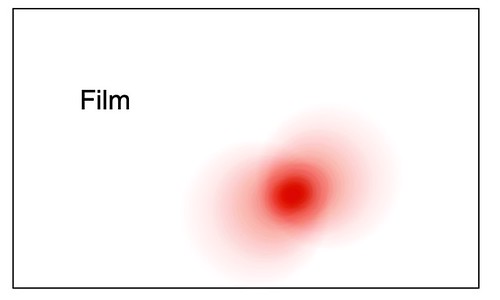WRT achieving focus with film vs. digital, there is an interesting theoretical issue. I say theoretical, because I've been unable to find the actual thickness of film emulsion (everybody tells you how thick the film is, but that includes the nonsensitive base as well).
Anyway, it is *possible* that a thick emulsion would be more tolerant of focusing errors. The interesting bit is the 3-dimensional plot of light intensity from a cone in a thick emulsion. Here is the result (angle of the cone greatly exaggerated for the purpose of illustration):
So while the exposed region in the film is larger because of the misfocus and thickness, the brightness near the true plane of focus is so much greater that the result looks *almost* perfectly focused anyway. The digital sensor would just record the large circle at the bottom of the cone.


I have no idea if this is a practical concern. I think our expectations of the two media differ, and that is more likely the issue.
Disclaimer: I am a big fan of both film and digital, and if the dust problem were manageable, I would use film a lot more. I enjoy processing B&W at home.
Matt






